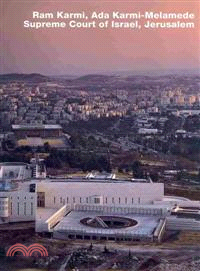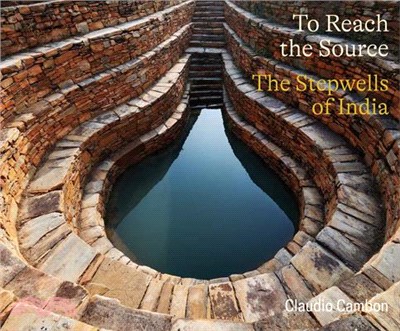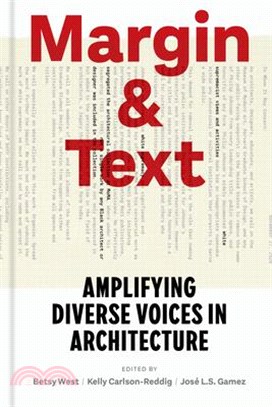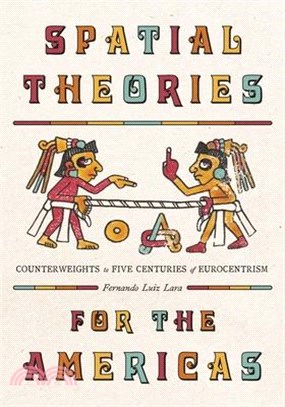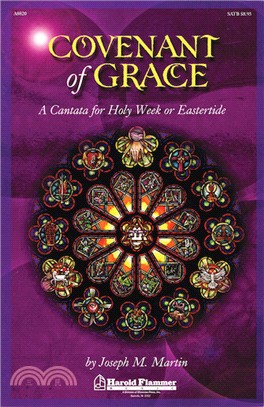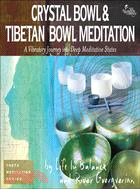Ram Karmi, Ada Karmi-Melamede Supreme Court of Israel, Jerusalem
商品資訊
ISBN13:9783932565717
替代書名:Ram Karmi, Ada Karmi-Melamede Supreme Court of Israel, Jerusalem
出版社:Natl Book Network
作者:Anne-catrin Schultz; Richard Bryant (PHT)
出版日:2010/09/16
裝訂/頁數:精裝/55頁
規格:31.1cm*29.2cm*1.9cm (高/寬/厚)
商品簡介
相關商品
商品簡介
Intent on realizing her late husband's vision, Dorothy de Rothschild first offered to provide funding for a new building housing the Supreme Court of Israel in the 1960s. In 1983 the offer was seriously considered and accepted.
Renowned architects from Israel and from all over the world entered into a two-stage competition in 1986. Ram Karmi and Ada Karmi-Melamede, siblings their own architecture practices, were asked to compete as a team. Their contribution stood out clearly against the other entries. Instead of proposing a formal and monumental scheme, the Karmis came up with a coherent site-specific building which roots itself into the land, continues the stone language of Jerusalem, and relates to its unique vibrant light.
Pure geometrical volumes are arranged to form a balanced composition and complex whole. A careful equilibrium is created between the gravity of local stone-masonry walls and the immaterial play of light and shadow in the voids and volumes of the structure. The Supreme Court acts as part of a larger civic urban ensemble and forms a gateway to Government Hill offering a pedestrian walkway to the Knesset.
While referred to as a single building, in reality the Supreme Court building is an ensemble applying urban principles to the interior, thus producing public spaces throughout. Half architecture, half landscape architecture, the Supreme Court building is deeply anchored in its site and reaches out further than its own walls. Four main functions are manifested in four distinct geometric volumes organized by two cardinal axes. These axes separate the four main program elements: the library, the judges' chambers, the courtrooms and the parking area. The allocation of the various volumes within the building allows for a sequence of in-between spaces which are used for circulation, for the penetration of natural light and for the transition between the public and private domains.
Paul Goldberger stated in The New York Times in 1995 that »the sharpness of the Mediterranean architectural tradition and the dignity of law are here married with remarkable grace«.
Anne-Catrin Schultz studied architecture in Stuttgart and Florence. Following post-doctoral research at MIT, she relocated to the San Francisco Bay Area and worked for several years with Turnbull Griffin Haesloop and Skidmore Owings & Merrill. She has taught at the University of California in Berkeley and is currently teaching at the California College of the Arts and City College of San Francisco. Richard Bryant is among the best-known architectural photographers, working all over the world. He is one of the few photographers to have been awarded an honorary fellowship of the Royal Institute of British Architects.
Renowned architects from Israel and from all over the world entered into a two-stage competition in 1986. Ram Karmi and Ada Karmi-Melamede, siblings their own architecture practices, were asked to compete as a team. Their contribution stood out clearly against the other entries. Instead of proposing a formal and monumental scheme, the Karmis came up with a coherent site-specific building which roots itself into the land, continues the stone language of Jerusalem, and relates to its unique vibrant light.
Pure geometrical volumes are arranged to form a balanced composition and complex whole. A careful equilibrium is created between the gravity of local stone-masonry walls and the immaterial play of light and shadow in the voids and volumes of the structure. The Supreme Court acts as part of a larger civic urban ensemble and forms a gateway to Government Hill offering a pedestrian walkway to the Knesset.
While referred to as a single building, in reality the Supreme Court building is an ensemble applying urban principles to the interior, thus producing public spaces throughout. Half architecture, half landscape architecture, the Supreme Court building is deeply anchored in its site and reaches out further than its own walls. Four main functions are manifested in four distinct geometric volumes organized by two cardinal axes. These axes separate the four main program elements: the library, the judges' chambers, the courtrooms and the parking area. The allocation of the various volumes within the building allows for a sequence of in-between spaces which are used for circulation, for the penetration of natural light and for the transition between the public and private domains.
Paul Goldberger stated in The New York Times in 1995 that »the sharpness of the Mediterranean architectural tradition and the dignity of law are here married with remarkable grace«.
Anne-Catrin Schultz studied architecture in Stuttgart and Florence. Following post-doctoral research at MIT, she relocated to the San Francisco Bay Area and worked for several years with Turnbull Griffin Haesloop and Skidmore Owings & Merrill. She has taught at the University of California in Berkeley and is currently teaching at the California College of the Arts and City College of San Francisco. Richard Bryant is among the best-known architectural photographers, working all over the world. He is one of the few photographers to have been awarded an honorary fellowship of the Royal Institute of British Architects.
主題書展
更多
相關商品
主題書展
更多書展今日66折
您曾經瀏覽過的商品
購物須知
外文書商品之書封,為出版社提供之樣本。實際出貨商品,以出版社所提供之現有版本為主。部份書籍,因出版社供應狀況特殊,匯率將依實際狀況做調整。
無庫存之商品,在您完成訂單程序之後,將以空運的方式為你下單調貨。為了縮短等待的時間,建議您將外文書與其他商品分開下單,以獲得最快的取貨速度,平均調貨時間為1~2個月。
為了保護您的權益,「三民網路書店」提供會員七日商品鑑賞期(收到商品為起始日)。
若要辦理退貨,請在商品鑑賞期內寄回,且商品必須是全新狀態與完整包裝(商品、附件、發票、隨貨贈品等)否則恕不接受退貨。

